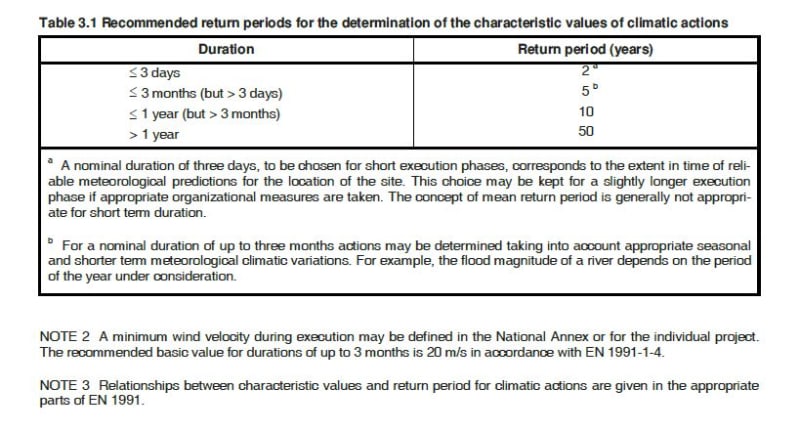Dear comunity,
I have to ballast plate laying on a flat roof. The plate has to stay there for less than 6 months.
Unfortunately, with 2Years of probability period I get too much ballast required.
Have you calculated that with 1 year probability. How you calculate it actually Cprob for 1 Year probability? Eurocode starts from 2 Years, and the given formula there doesn`t work with 1 year.
I have seen only into the Spanish DBSE-AE norm for wind: 1 year probability --> Cprob=0.41. But how I can reach that value 0.41?
Thank you for your help!
I have to ballast plate laying on a flat roof. The plate has to stay there for less than 6 months.
Unfortunately, with 2Years of probability period I get too much ballast required.
Have you calculated that with 1 year probability. How you calculate it actually Cprob for 1 Year probability? Eurocode starts from 2 Years, and the given formula there doesn`t work with 1 year.
I have seen only into the Spanish DBSE-AE norm for wind: 1 year probability --> Cprob=0.41. But how I can reach that value 0.41?
Thank you for your help!

